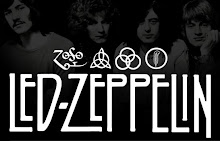METERED POETRY
The most common meters are:
Iambic
A foot which starts with an unaccented and ends with an accented (stressed) syllable. It is the most common meter in the English language and naturally falls into everyday conversation. An example is "To be or not to be" (the accented syllables are italicized) from Shakespeare's Hamlet.
Trochaic
The opposite of an iambic meter. It begins with an accented then followed by an unaccented syllable. An example is the line "Doule, doule, toil and trouble." from Shakespeare's Macbeth.
Anapestic
A foot which has two unaccented syllables followed by an accented syllable. Example: "I arise and unbuild it again" from Shelley's Cloud.
Dactylic
A foot including an accented syllable followed by two unaccented syllables. Example: openly.
Spondee
A foot consisting of two accented syllables. Example: heartbreak.
Pyrrhic
A foot including two unaccented syllables, generally used to vary rhythm.
As well, meters are named for the number of feet; monometer: one foot, dimeter: two feet, trimeter: three feet, tetrameter: four feet, pentameter: five feet, hexameter: six feet, heptameter: seven feet.
Saturday, December 13, 2008
Subscribe to:
Post Comments (Atom)

No comments:
Post a Comment